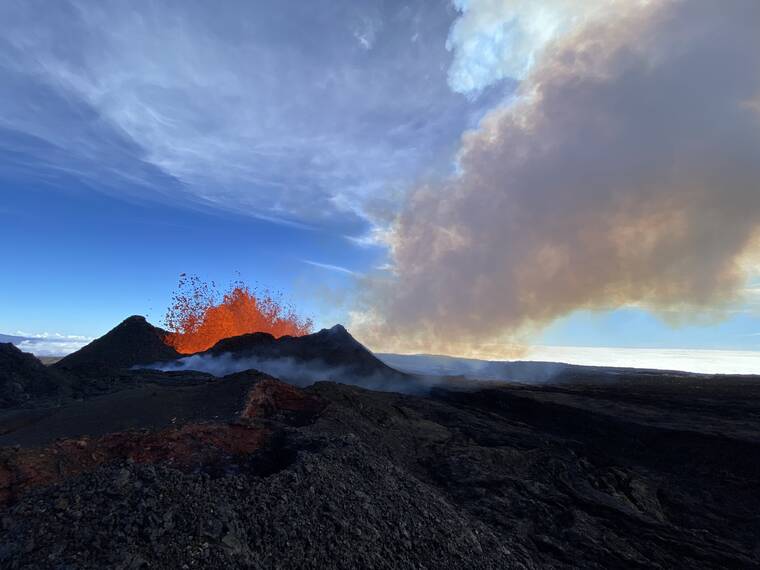The Northeast Rift Zone eruption of Mauna Loa continues, with two active fissures feeding lava flows downslope, the Hawaiian Volcano Observatory reported Thursday morning.
Fissure 3 remains the dominant source of the largest lava flow. The fissure 3 lava flows are traveling to the north toward the Daniel K. Inouye Highway (Saddle Road) but have reached relatively flatter ground and have slowed down significantly as expected. Advance of the largest flow slowed over the past 24 hours to a rate of 0.025 miles per hour (40 meters per hour).
As of 7 a.m. Thursday, the flow front was about 3.4 miles (5.4 km) from the Daniel K. Inouye Highway (Saddle Road). Advance rates may be highly variable over the coming days and weeks due to the way lava is emplaced on flat ground.
At the rate observed over the past 24 hours, the earliest the lava flow might be expected to reach the Daniel K. Inouye Highway (Saddle Road) is one week. However, there are many variables at play and both the direction and timing of flow advance are fluid and are expected to change over periods of hours to days.
Fissure 4 is still active with lava flows moving toward the northeast at a rate of 0.04 miles per hour (60 meters per hour). The northeast fissure 4 lava flow crossed the Mauna Loa Weather Observatory road overnight. A small lobe is moving to the east from fissure 4 at a slower rate than the main lobe. Volcanic gas plumes are lofting high and vertically into the atmosphere. Pele’s hair (strands of volcanic glass) is falling in the Humu‘ula Saddle area.
Our seismic monitoring detects tremor (high rates of earthquakes) in the location of the currently active fissures. This indicates that magma is still being supplied, and activity is likely to continue as long as we see this signal.
There is no active lava within Moku’aweoweo caldera, and the Southwest Rift Zone is not erupting. We do not expect any eruptive activity outside the Northeast Rift Zone. No property is at risk currently.

